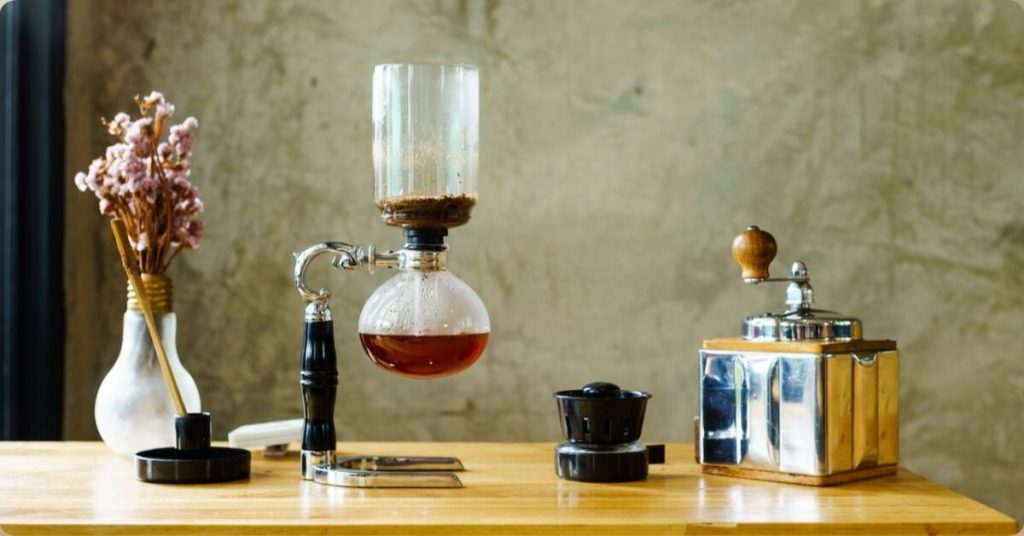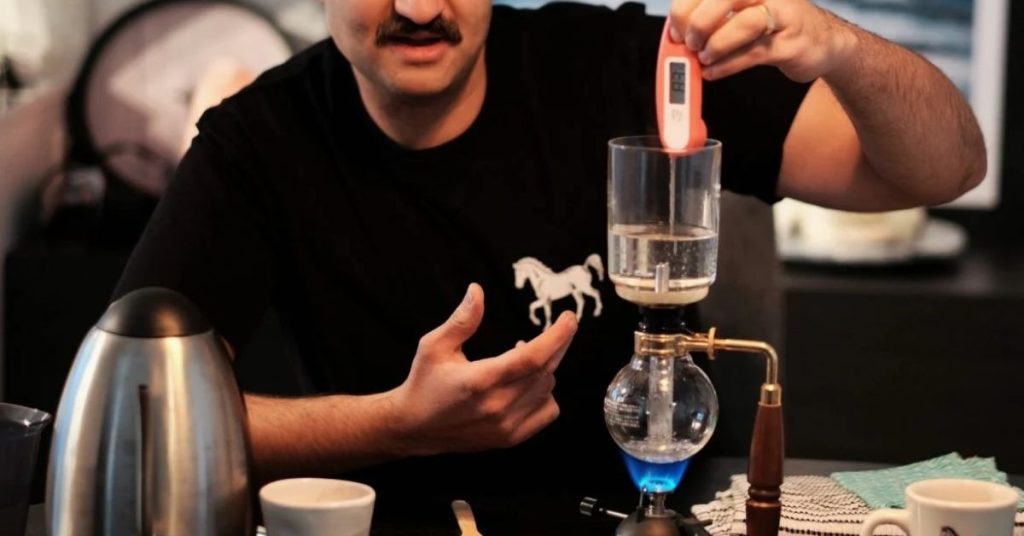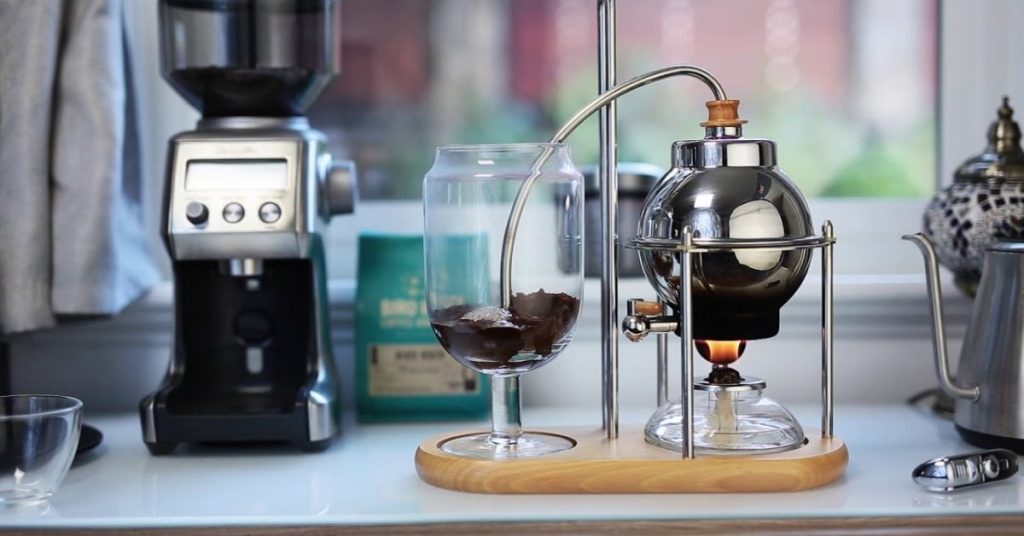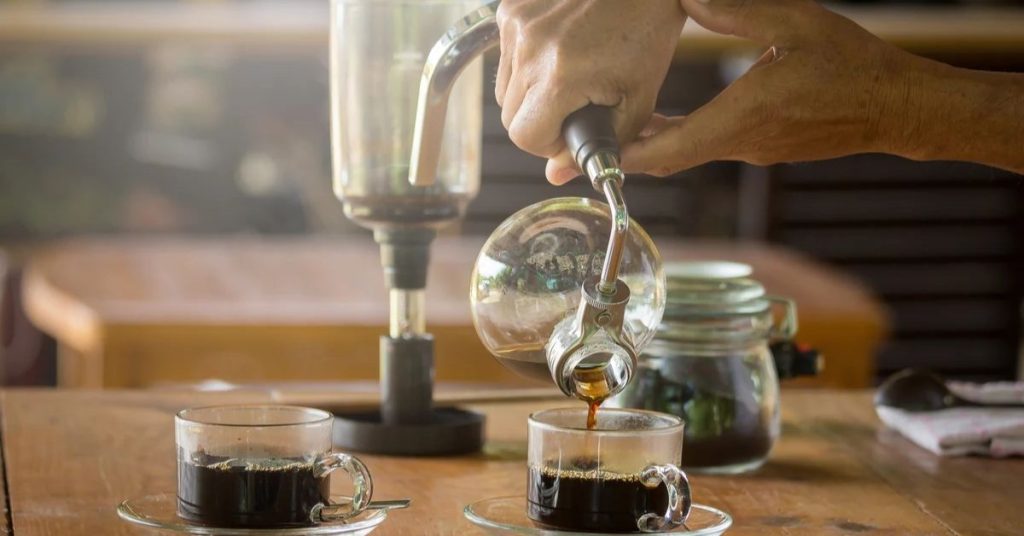How to Make Siphon Coffee: A Beginner’s Guide
Making siphon coffee is a unique and rewarding experience that produces a delicious cup of coffee. It also known as vacuum coffee, uses a combination of immersion and infusion brewing methods to create a clean and flavorful cup. In this article, I will share with you my step-by-step guide on how to make siphon coffee at home.
To achieve this, you will need a few tools such as a coffee maker, a heat source, beans, a grinder, a scale, and a timer. While it may seem like a lot of equipment, the process is straightforward and easy to follow. With a little bit of practice, you can become a master at making coffee and impress your friends and family with your skills.
In the following steps, Aspect Coffee Works will guide you through the entire process, from setting up the equipment to brewing. By the end, you’ll have the knowledge to craft a delicious cup of coffee at home. Let’s get started!
Contents
Understanding Siphon Coffee Brewer

As a coffee enthusiast, I’ve explored various methods, and siphon brewing has become a personal favorite. Siphon coffee makers, also known as vacuum coffee machines, consist of two chambers connected by a tube. The bottom chamber holds water, while the top chamber contains ground coffee.
To brew coffee using a siphon coffee maker, heat the water in the bottom chamber until it boils. The steam pressure forces water into the top chamber, where it blends with the coffee. After a quick stir in a few minutes, remove the heat source, and the coffee flows back into the bottom chamber, filtered by a cloth or metal filter.
One aspect that makes brewing unique is its use of full immersion. This means that the coffee is entirely submerged in water during the process, resulting in a full-bodied cup with a clean taste and no bitterness.
Another advantage of brewing is its precise control over temperature compared to other methods. Water temperature affects coffee taste, and this method allows experimentation with different temperatures to find the ideal balance for your palate.
Don’t worry, this is a distinctive and enjoyable way to make coffee, delivering a delicious and clean cup. With practice and experimentation, you can master this method and showcase your barista skills to friends and family.
Components of a Siphon Brewer Maker

As someone who loves coffee, I find siphon brewing to be a fascinating and rewarding way to make a tasty coffee. Before you can start making, it’s important to understand the components of a coffee maker.
A coffee maker consists of four main parts:
- Bottom Section: This is where you put the water. It’s usually made of glass or plastic and has a narrow neck that connects to the top section.
- Top Section: This is where you put the coffee grounds. It’s also usually made of glass and has a wider opening than the bottom section.
- Filter: This sits between the two sections and prevents the coffee grounds from getting into the bottom section.
- Heat Source: This can be a burner or a stove. It’s used to heat up the water in the bottom section, which then rises up to the top section and brews the coffee.
It’s important to note that some machines may have additional parts, such as a stand or a cloth filter. However, the four components listed above are the most essential.
When choosing a coffee machine, it’s important to consider the quality of the materials used to make each component. Glass and stainless steel are good choices for the top and bottom sections, as they are easy to clean and do not affect the taste of the coffee. The filter should be made of a high-quality material, such as stainless steel or cloth, to ensure that it effectively filters out the coffee grounds.
Choosing the Right Coffee Beans

The quality of the beans you use can make a huge difference in the final taste. Here are some pro tips to help you choose the right beans for your coffee:
1. Choose high-quality beans
The first step in choosing the right beans is to select high-quality beans. Look for beans that are freshly roasted and have a strong aroma. Freshly roasted beans have a richer flavor and aroma, which will make your coffee taste even better.
2. Consider the roast level
The roast level of your beans can also affect the taste. Generally, light roast beans have a brighter, more acidic taste, while dark roast beans have a richer, more full-bodied taste. Consider your personal taste preferences when choosing the roast level of your beans.
3. Choose the right size
The size of your beans is also important with siphon coffee. For this method, you’ll want to use a medium-fine size. If the size is too fine, it can clog the filter and make it difficult to extract the coffee. If the size is too coarse, the coffee will be under-extracted and weak.
4. Experiment with different origins
Different bean origins can also affect the taste of your coffee. Experiment with different origins to find the flavor profile that you enjoy the most. Some popular bean origins for siphon coffee include Ethiopia, Colombia, and Brazil.
By following these tips, you can choose the right beans for your coffee and enjoy a flavorful coffee every time.
Grinding Coffee Beans for Siphon Coffee

Grinding the beans is a crucial step that can greatly affect the taste and quality of the final product. Here are some tips on how to do this:
Choose the Right Grind Size
The grind size of your beans is important when it comes to siphon coffee. The ideal size for this method is medium-coarse, similar to the texture of sea salt. If the size is too fine, it can clog the filter and make it difficult for the water to flow through. On the other hand, if the size is too coarse, the water will not extract enough flavor from the beans.
Use a Burr Grinder
To achieve a consistent size, it is recommended to use a burr grinder instead of a blade option. Burr grinders crush the beans between two abrasive surfaces, resulting in a more uniform size. Blade options, on the other hand, chop the beans into uneven pieces, which can result in a mix of coarse and fine particles.
Grind Fresh
For the best flavor and aroma, it is recommended to grind your beans. This will ensure that the coffee is as fresh as possible and that the oils and flavors are still intact. If you don’t have a grinder at home, you can ask your local coffee shop to grind the beans for you, but make sure to use them within a few days.
Measure Your Coffee
The amount of coffee you use will depend on the size of your machine and your personal taste preferences. As a general rule, a ratio of 1:15 (coffee to water) is a good starting point. For example, if you are using 500ml of water, you would use around 33g of coffee. However, you can adjust this ratio to make your coffee stronger or weaker, depending on your preference.
By following these tips, you can ensure that your coffee is perfect, with the right balance of flavor and aroma.
How to Make Siphon Coffee: Your Complete Guide to Perfect Brews

As a coffee lover, I’m always exploring new ways and trying to learn how to brew coffee with a siphon to make the perfect cup. One of my favorite methods is using a coffee machine. It might appear complex, but it’s surprisingly straightforward. Here’s the detailed brew guide:
- Set up the machine: First, assemble it by attaching the top and bottom sections. Ensure the filter is in place in the top section. Place the funnel in the top section to hold the coffee grounds.
- Add water to the base vessel (kettle): Pour water into the bottom section. You can use preheated or cold water, but filtered water is best for optimal results. It’s crucial to ensure that the water is hot enough to create the necessary steam pressure for the brewing process.
- Apply heat to the base: Place the coffee maker on a heat source, like a stovetop or butane burner. Wait for the water to heat up and start to boil. Turn the heat to maintain a steady temperature.
- Add coffee to the assembled maker: Once the water has boiled, add the grounds to the top section. Use a medium-fine grind for best results, and gently stir with a wooden spoon.
- Stir and steep: Use a spoon to stir the ground into the water. Start a timer for about 1 minute and let the coffee steep or until all the water has moved to the top.
- Remove from heat: Once the coffee has steeped, remove the maker from the heat source.
- Wait for the coffee to filter: As the coffee maker cools, the coffee will filter back down to the bottom section. This process usually takes about a minute or two.
- Serve and enjoy: Once the coffee has filtered back down, remove the top section and pour the coffee into your cup.
That’s it! With these step-by-step instructions and a little practice, you’ll be able to make a perfect cup every time.
Troubleshooting Common Siphon Coffee Problems

As with any method, siphon coffee can sometimes have problems. Here are some common issues and how to troubleshoot them.
Weak Coffee
If your coffee is weak, it could be due to several reasons. First, make sure you are using the correct amount of coffee grounds. A good rule of thumb is to use 7g of coffee per 100ml of water. If you are using too little coffee, the resulting brew will be weak.
Another reason for weak coffee could be that the water temperature is too low. The water should be heated to around 200°F (93°C) for optimal. If the water is not hot enough, the coffee will not extract properly, resulting in weak coffee.
Over-Extracted Coffee
Over-extracted coffee can taste bitter and unpleasant. If your coffee is over-extracted, it could be due to using too much coffee or brewing for too long. Try reducing the amount of coffee grounds and/or decreasing the steeping time.
Another reason for over-extracted coffee could be that the water temperature is too high. If the water is too hot, it can cause the coffee to extract too quickly, resulting in bitter flavors. Make sure the water temperature is around 200°F (93°C).
Coffee Grounds in the Brew
If you are finding coffee grounds in your coffee, it could be due to using too fine of a pulverization. Siphon coffee requires a coarser grind than other methods, such as drip coffee. Ensure you’re using a medium-coarse grind.
Another reason for coffee grounds in the brew could be that the filter is not properly placed or is damaged. Make sure the filter is securely in place and not torn or damaged.
By troubleshooting these common coffee problems, you can ensure a delicious and satisfying coffee.
Frequently Asked Questions
What is the ideal siphon coffee grind size?
The ideal coffee grind size is medium. A medium size is preferred because it allows for the right amount of extraction during the process. If the size is too fine, the coffee will over-extract and result in a bitter taste. On the other hand, if the size is too coarse, the coffee will under-extract and result in a weak taste.
How much coffee should I use for siphon coffee?
The recommended coffee-to-water ratio is 1:15. This means that for every 1 gram of coffee, you should use 15 grams of water. For example, if you want to make 300ml of coffee, you should use 20 grams of coffee and 300ml of water.
What is the recommended siphon coffee brew time?
The recommended time is between 2 and 3 minutes. During this time, the water and coffee grounds are mixed together and heated. Once the process is complete, the coffee is filtered and ready to be served.
How does a Japanese siphon coffee maker work?
A Japanese coffee maker works by using a vacuum to extract the coffee. The coffee is brewed in a glass chamber, which is heated by a burner. As the water heats up, it rises into the upper chamber where the coffee grounds are located. Once the process is complete, the burner is removed, and the vacuum created by the cooling chamber pulls the coffee back down into the lower chamber.
What is the best siphon coffee ratio?
The best coffee ratio is subjective and depends on personal preference. However, a good starting point is to use a coffee-to-water ratio of 1:15. From there, you can adjust the ratio to your liking by adding more or less coffee. Keep in mind that adding more coffee will result in a stronger taste while adding less coffee will result in a weaker taste.
Conclusion
Syphon coffee creation can seem intimidating at first, but with practice and patience, it can become a rewarding and enjoyable experience. Here are a few key takeaways to keep in mind:
- Use good, fresh, high-quality beans for the best flavor.
- Preheat your coffee machine to ensure even extraction, and make sure the water is heating.
- Experiment with different grind sizes and times to find your perfect cup.
- Keep track of the total brew time to understand the impact on flavor.
- Clean your coffee machine thoroughly after each use to prevent buildup and maintain optimal performance.
- Give the coffee-making process the attention it deserves, and enjoy savoring the unique flavors and aromas.
When you’re ready to give it a try, follow the steps outlined in this guide, and you’ll be well on your way to brewing a delicious coffee. With these tips and a little bit of practice, you can become a coffee brewing expert in no time. So why not give it a try and impress your friends and family with a delicious and unique way to serve the coffee?







